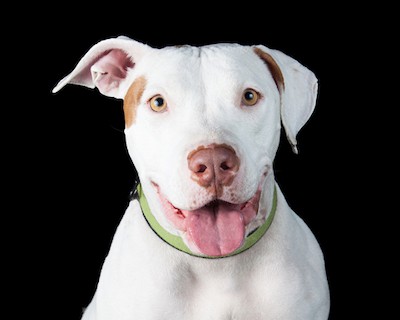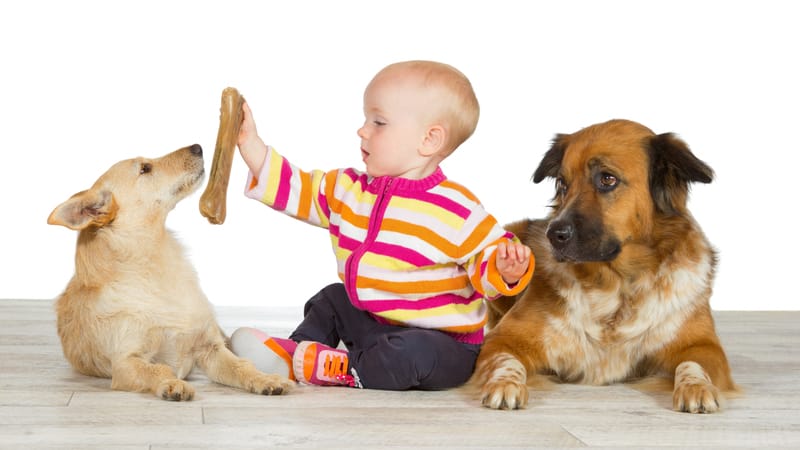My Pet World: Flying with pets this summer
Plus a passive pit and a reproachful reader

In this issue of ‘My Pet World,’ animal expert Cathy M. Rosenthal fields questions on flying with pets in the summer – specifically two London-bound cats – and on a passive pit bull who is oblivious to being mounted. She also responds to a concerned reader who disagreed with her advice on introducing dogs to baby.
Dear Cathy: My daughter will be moving to London this summer. She has two rescue cats and wants to take them with her. She found an agent in Miami who takes care of all the requirements and paperwork. She just needs to be there to collect them when they arrive. Is it safe for the cats to take such a long flight? I understand they have to travel in the cargo hold, and I am worried about how stressed they will be.
– Amy, Coral Springs, Florida
Dear Amy – It’s natural to be a little concerned. If they are on a non-stop flight, they should sleep/rest during the entire trip, which I estimate is eight hours. The cargo hold is pressurized and climate-controlled, so it will accommodate them.
However, airlines won’t fly animals if it’s below 45 degrees or above 84 degrees. The concern is not the temperature in the cargo hold, but the holding area or on the runway where animals wait before boarding a flight. The temperatures at Miami International Airport during the summer will likely be in the 90s. The agent may be planning for the cats to fly on an early morning or late evening flight to avoid these temperature restrictions, or maybe the agent knows of an airline with climate-controlled holding areas. But this is something to consider if flying cats during the summer.
Overall, the cats will be a bit stressed during the trip but should recover within a few days after reuniting with their “mom.”
8 safe houseplants for households with cats
 Dear Cathy: Reo is an 8-year-old, 75-pound, non-aggressive boxer/pit mix. When we are at the dog park or doggie day care, other dogs try to mount him. He pays no attention to it. Any thoughts as to why?
Dear Cathy: Reo is an 8-year-old, 75-pound, non-aggressive boxer/pit mix. When we are at the dog park or doggie day care, other dogs try to mount him. He pays no attention to it. Any thoughts as to why?
– Elaine, Long Beach, New York
Dear Elaine: While mounting is a sexual behavior, it’s also a normal canine posture during play. While most dogs will take turns with this “top-dog” pose, sometimes there is an overly dominant dog who will do most of the mounting or a very submissive dog who doesn’t mind the stance or doesn’t mount during play at all. If you ever feel like your dog is unhappy or the activity has gone on for long enough, politely ask the other pet parent to call their dog so your dog can have a break.
 Dear Cathy: I totally disagree with your advice to Marsha from Queens. Her concern was her daughter and daughter-in-law’s new baby getting along with their two dogs, one of which is a bichon-Yorkie mix who she said has already growled at children. You suggest bringing that dog to a park where children are playing. Worse is the suggestion of “invite friends with kids over.” No matter what a good friend you are, I would never volunteer my children as training aides. You did not mention hiring a professional trainer. I would be interested what they would have to say. I’m curious, are you a mother, of human children that is?
Dear Cathy: I totally disagree with your advice to Marsha from Queens. Her concern was her daughter and daughter-in-law’s new baby getting along with their two dogs, one of which is a bichon-Yorkie mix who she said has already growled at children. You suggest bringing that dog to a park where children are playing. Worse is the suggestion of “invite friends with kids over.” No matter what a good friend you are, I would never volunteer my children as training aides. You did not mention hiring a professional trainer. I would be interested what they would have to say. I’m curious, are you a mother, of human children that is?
– Concerned mother, New York
Dear Concerned Mother: I raised a son around five dogs and five cats during his 18 years, so I can appreciate your concerns. When I gave the advice, I assumed people understood to keep their dogs leashed at the park as the goal was not to engage children, but to listen to and see kids playing. Dogs can be somewhat socialized by just being around other people, kids, and dogs.
As for inviting friends with kids over, I am sorry if it sounded like the children would be in danger. The dog should not be out playing with the visiting child but merely in the presence of the child for the same reasons as noted above. The dog should be kept on a leash or placed in a kennel in the same room so the dog can be present but not interact with the child or vice versa.
Pet parents should teach their dogs some basic obedience and socialize them in as many ways as possible before their baby is born. If a dog is aggressive, then I agree that a professional dog trainer can give the specific advice needed for that particular animal’s issues and offer tips on how to manage that dog around the baby. For example, I always fed my food-aggressive dogs in their kennels to prevent my son from walking toward them and triggering a response.
I hope this adds more context to my response and alleviates your concerns. Thanks for writing.


